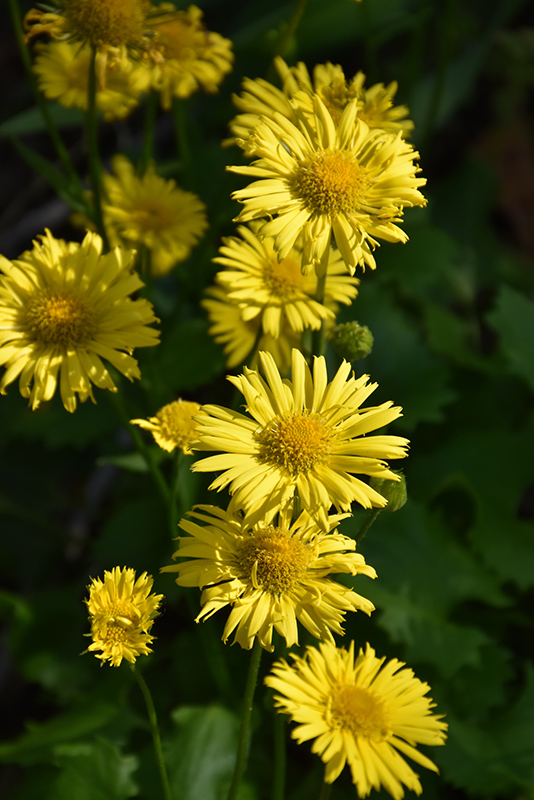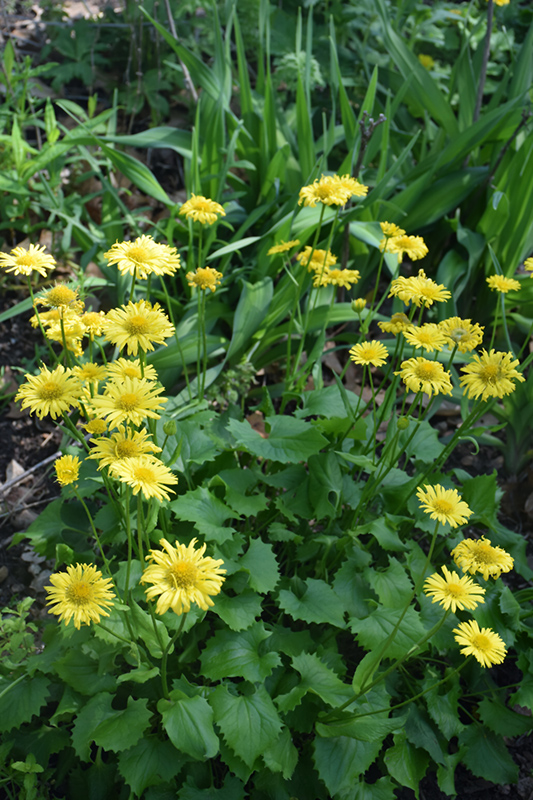Little Leo Leopard's Bane Doronicum 'Little Leo' Height: 12 inches Spread: 10 inches
Sunlight:
Hardiness Zone: 2 Description: Produces abundant cheerful golden daisy-like flowers early in the season; pair up with late flowering bulbs or forget-me-nots; this cool season perennial is not humidity and heat tolerant, best in partial shade with consistent moisture Ornamental Features Little Leo Leopard's Bane features showy yellow daisy flowers with gold eyes at the ends of the stems from early spring to early summer. The flowers are excellent for cutting. Its serrated heart-shaped leaves remain dark green in color throughout the season. Landscape Attributes Little Leo Leopard's Bane is an herbaceous perennial with a mounded form. Its medium texture blends into the garden, but can always be balanced by a couple of finer or coarser plants for an effective composition. This is a relatively low maintenance plant, and should be cut back in late fall in preparation for winter. It is a good choice for attracting butterflies and hummingbirds to your yard. It has no significant negative characteristics. Little Leo Leopard's Bane is recommended for the following landscape applications; Planting & Growing Little Leo Leopard's Bane will grow to be about 12 inches tall at maturity, with a spread of 10 inches. Its foliage tends to remain dense right to the ground, not requiring facer plants in front. It grows at a medium rate, and under ideal conditions can be expected to live for approximately 10 years. As an herbaceous perennial, this plant will usually die back to the crown each winter, and will regrow from the base each spring. Be careful not to disturb the crown in late winter when it may not be readily seen! As this plant tends to go dormant in summer, it is best interplanted with late-season bloomers to hide the dying foliage. This plant performs well in both full sun and full shade. It prefers to grow in average to moist conditions, and shouldn't be allowed to dry out. It is not particular as to soil pH, but grows best in rich soils. It is somewhat tolerant of urban pollution, and will benefit from being planted in a relatively sheltered location. Consider applying a thick mulch around the root zone over the growing season to conserve soil moisture. This particular variety is an interspecific hybrid. It can be propagated by division; however, as a cultivated variety, be aware that it may be subject to certain restrictions or prohibitions on propagation. Little Leo Leopard's Bane is a fine choice for the garden, but it is also a good selection for planting in outdoor pots and containers. It is often used as a 'filler' in the 'spiller-thriller-filler' container combination, providing a mass of flowers against which the thriller plants stand out. Note that when growing plants in outdoor containers and baskets, they may require more frequent waterings than they would in the yard or garden.![]()
![]()
![]()
![]()
![]()
![]()
![]()
![]()
![]()
![]()
![]()
![]()
![]()
![]()
Characteristics
Applications
Ornamental Features
This guide is an online resource representing many of the varieties that we carry over the course of the season, and is intended for informational purposes only. Inventory varies seasonally, so we cannot guarantee that every plant will be in stock at all times - please contact the store directly for current availability. It does not include our entire selection of plants, so be sure to visit our store to see varieties that may not be represented on this list.



